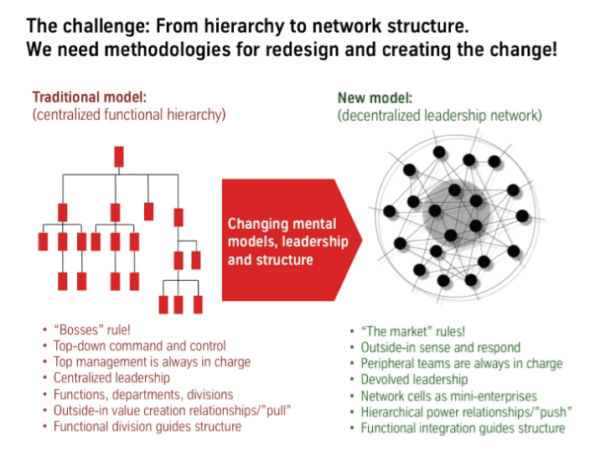In last week’s blog I bemoaned the epidemic nature of dysfunctional and irrelevant party politics, both in Canada and around the world. Whether the Conservatives, Liberals or New Democrats are waving Canada’s leadership flag, political governance is more about getting reelected than about designing and executing a national strategy — say, unification of and service to people and planet, locally as well as globally.
It seems as though government, for-profit and non-profit organizations are all seeking a ‘magic bullet’ that when discharged promises to balance security, stability and growth. With the impassioned election of Barak Obama in 2009, many Americans hoped the answer to their prayers was found. However, it soon became clear one person, even one party, cannot bring about the revolutionary rapid change necessary for survival and thriving in the complexity of this 21st century. This is something we already knew. Time and time again within organizational settings, I witnessed innovation come up against a command and control structure and perish without penetrating its power-based ramparts. Why is this?
When consulting within organizational change processes, I tell my clients “There are no bad people, only bad systems that frustrate good people from doing good work.” Throughout the room, heads nod in agreement, and we then adopt this belief as a governing principle throughout the change process. During dialogues where parties’ conflicting interests (management versus employee) may become divisive, we need to remind ourselves of our agreement. Regardless of the role played (employee, management, union), the same principle applies — There are no bad leaders, only bad systems that frustrate good leaders from doing good work.
The “bad systems” I refer to are traditional organization structures with centralized leadership around a functional hierarchy; what we familiarly label as bureaucracies or command and control management structures. As many of my earlier organization design blogs outline, we are in the midst of shifting our governance landscape from these centralized hierarchies into decentralized networks. Niels Pflaging’s illustration below echoes the contents of a 2012 white paper, Sociotechnical Systems Design for Adaptive Enterprises, which was co-authored with my Socio-technical Systems Roundtable colleagues.
Under [the network structure], decisions are not made at the top. Instead, they
are distributed, decentralized, and devolved as far out as possible. This type of
performance contract [shared governance] is based on mutual trust. Respon-
sibility for performance and decision-making are gradually shifted away from
the center of the organization towards the periphery. Niels Pflaging
If we agree with Niels that command and control management theories and practices that emerged from the Industrial Age of the 20th century were inhumane and ineffective, then with what are we replacing them in this 21st century Creative Age?
For those of us who believe humanity is motivated toward growth and creative contribution (Theory Y not Theory X), shared governance systems allow for such blossoming and social responsibility to be jointly optimized. Shared governance practices distribute and decentralize decision making, which reintegrates thinking (executives’ work) with doing (employees’ work). I will write more on what shared governance systems look like in my upcoming April blogs, but for now I am more intrigued with what leadership competencies (skills, attitudes, experiences) each of us needs to grow in order to govern collaboratively. There is much written on this subject, but for purposes of focusing my discussion I extracted the recent survey results below from Skillsoft. In its 2012 survey — Actionable Leadership in the Creative Age — 1100 individuals around the world reported the following 21st century leadership attributes and capabilities. Under the appropriate heading, check which of these competencies you practice.
Not me Partly me Consistently me
1. Global perspective
2. Forward looking
3. Relationship builder
4. High integrity
5. Collaborative
6. Open minded
If we wish to responsibly share in governing the world around us, there is an increasing likelihood we will need to adopt these and possibly other leadership competencies.
What competencies, if any, do you feel were missed in the Skillsoft survey?
Which of these six competencies are consistently you? Which are not you?





